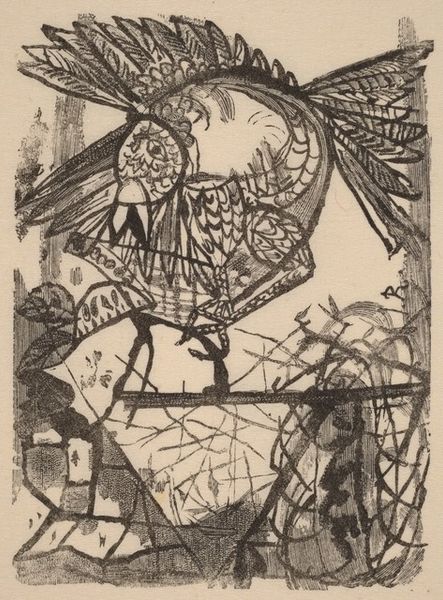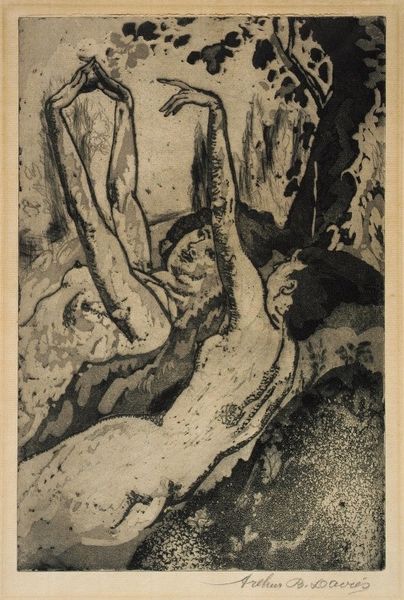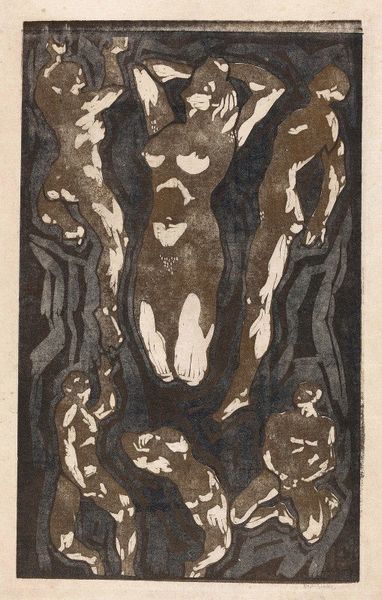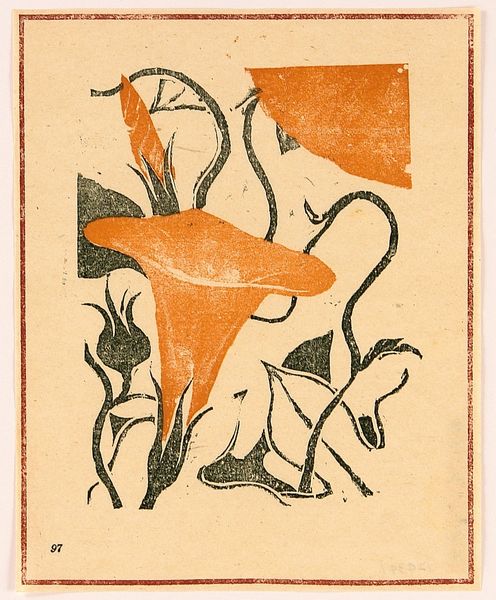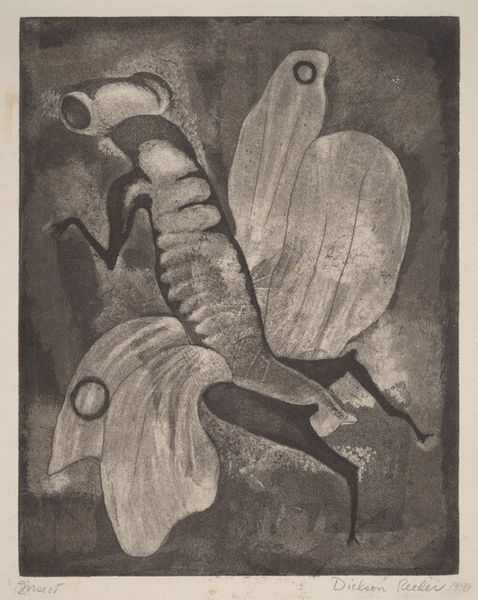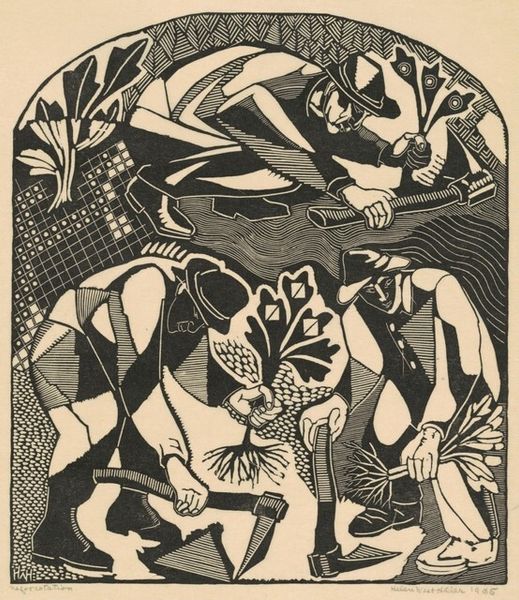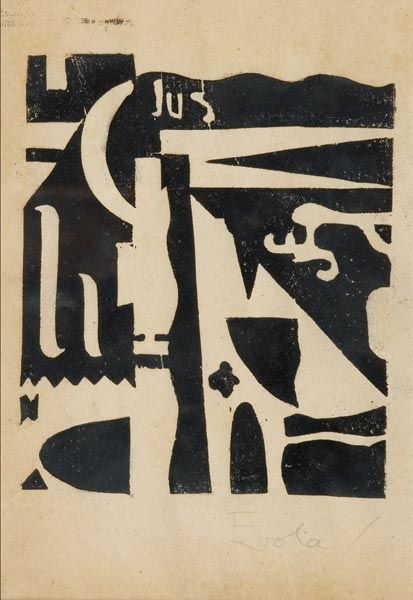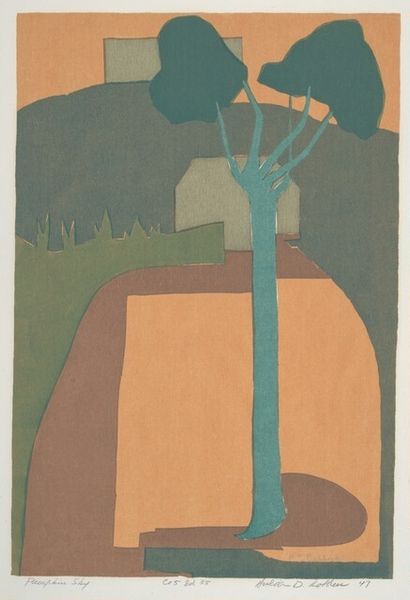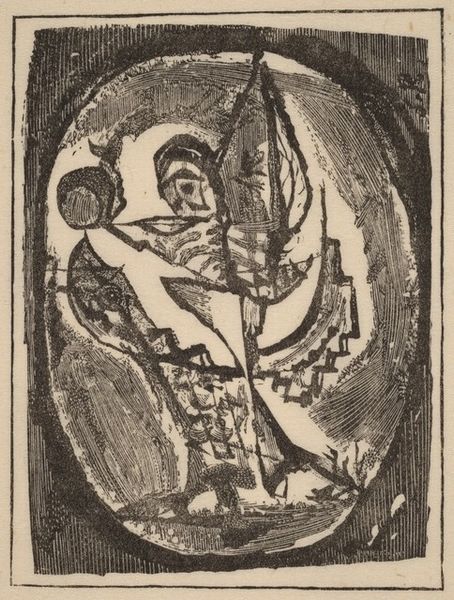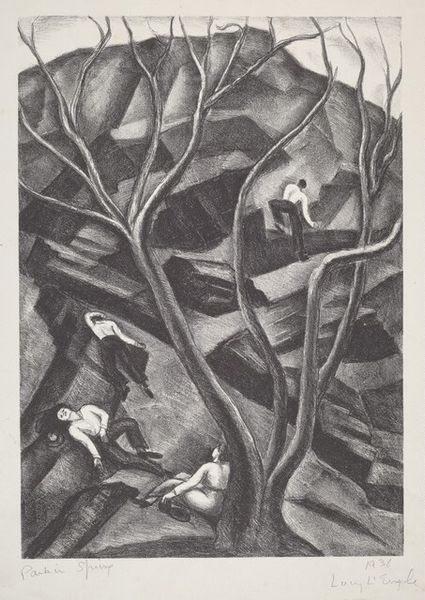
painting, watercolor
#
painting
#
landscape
#
figuration
#
oil painting
#
watercolor
#
geometric
#
expressionism
#
watercolour illustration
#
watercolor
Copyright: Public Domain: Artvee
Curator: This watercolour from 1913 is entitled "Red Horse and Yellow Cattle" and was made by Franz Marc. The work immediately suggests a certain fracturing, doesn’t it? Both of form and… well, almost of feeling. Editor: Indeed. The composition, with those almost brutal geometric interventions cutting through the animal forms, definitely evokes a sense of unease. It feels stark. The colours themselves seem almost deliberately discordant. Curator: Given the historical context, it’s impossible to ignore that sense of unease. Marc painted this just before the outbreak of the First World War. We know he volunteered and died in action in 1916. Works like this must be viewed in light of impending catastrophe. He used colour, specifically, as a method to attach feelings and meaning to animals, so how do you interpret the emotional significance here? Editor: If we focus on the formal elements, the stark application of the watercolors suggests a deconstruction of reality into basic components. Observe how the colours clash but also delineate space, and how the simplification and overlapping lines give form. The grey vertical bars further break down any notion of clear picture plane. Curator: The bars almost acting as blinders, perhaps? His intention wasn't just to represent animals, but to reflect humanity's increasingly fraught relationship with the natural world. Expressionism in the early 20th century explored inner psychological states, and I suggest that the "fracturing" is not merely formal, but symbolic of a world about to be broken apart by war and industrial modernity. The tension between vibrant color and geometric constraint underscores this emotional and political dynamic. Editor: It’s interesting to think about this painting both in terms of semiotics and Expressionist symbolism, because both are working in the realm of representation, of translating the real to the painted surface. To bring this dialogue together, I see this work, through the combination of fragmented space, colour theory, and emotional content, reflecting anxiety, but more universally demonstrating an approach of representing meaning. Curator: It seems that approaching the formal aspects and cultural context helps inform the meaning we might derive from this piece, and that the value we still find in it arises from that understanding.
Comments
No comments
Be the first to comment and join the conversation on the ultimate creative platform.

